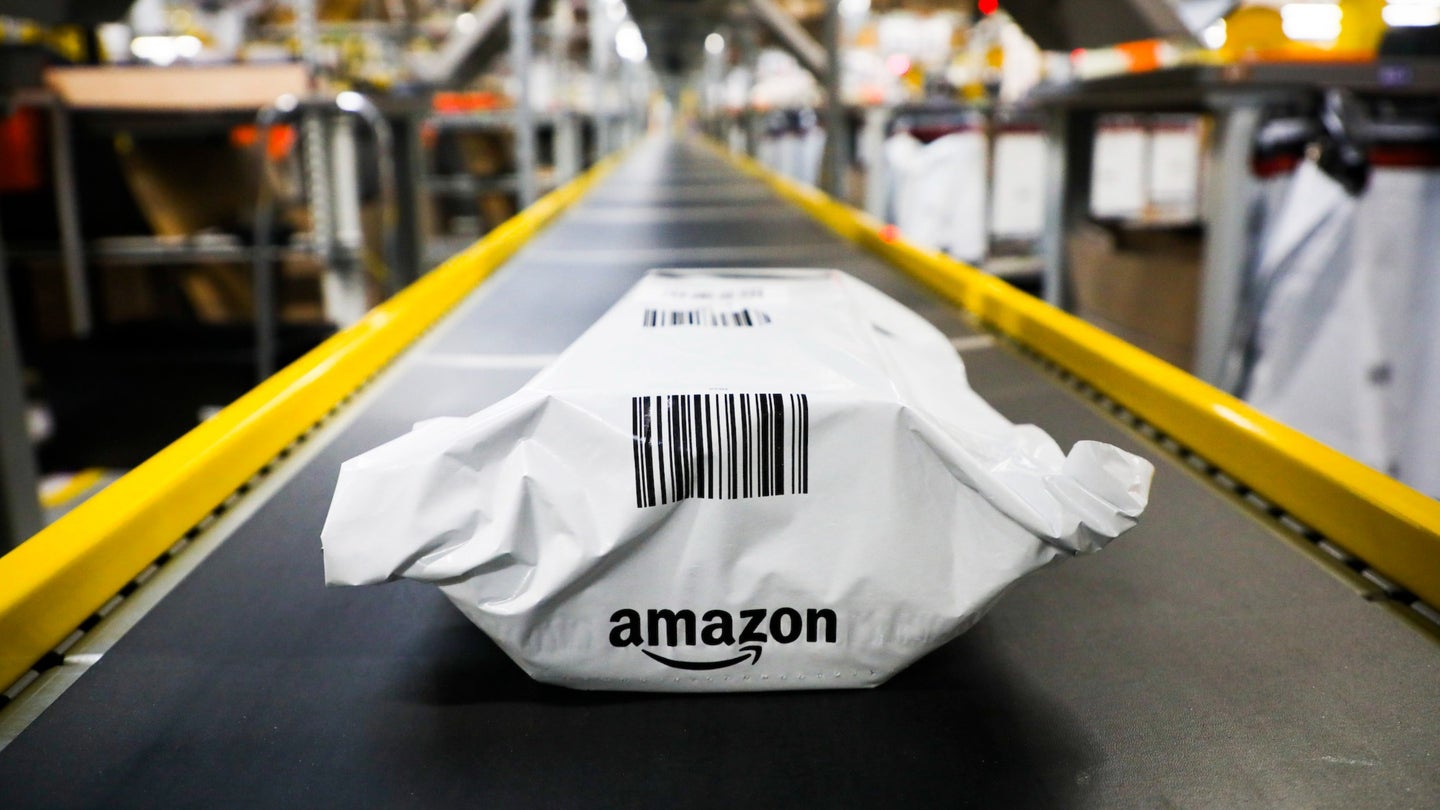Amazon might finally be cutting down on plastic waste
The company says it used 86,000 metric tons of plastic last year—12 percent less than in 2021.

This story was originally published by Grist. Sign up for Grist’s weekly newsletter here.
After years of criticism for its outsize use of plastic, the world’s largest retailer appears to be making progress to reduce its plastic footprint.
Amazon announced in its latest sustainability report on Tuesday that orders shipped from its fulfillment centers used 85,916 metric tons of single-use plastic in 2022—an 11.6 percent decrease from the amount used in 2021.
The company attributed this decline to its expanded use of paper-based packaging, as well as an increased effort to ship items in their original containers—without adding any Amazon-branded packaging. Amazon has also stopped using nonrecyclable bags made of mixed materials, and on Tuesday it said it was “phasing out” padded plastic mailers—those ubiquitous blue and white envelopes studded with the Amazon logo—in favor of “recyclable alternatives.”
Eliminating padded plastic mailers is a “big, big deal,” said Matt Littlejohn, senior vice president for strategic initiatives for the nonprofit Oceana, although he called on the company to set a concrete timeline for doing so. He called Amazon’s sustainability report “good news for the oceans,” since plastic film like the kind used in Amazon’s packaging is one of the most common forms of marine plastic litter and is the deadliest type of plastic to marine animals.
Plastics have other impacts, too: They’re made of fossil fuels and are a major source of climate pollution, and they cause toxic chemical pollution at every stage of their life cycle. Meanwhile, the U.S. recycling rate for plastics is just 5 percent, meaning the vast majority of plastics are littered, burned, or sent to a landfill.
Amazon’s 2022 sustainability report is the first to include a quantitative estimate of the company’s single-use plastics footprint; previously, the company’s only other estimate came from a blog post last December. Before that, organizations like Oceana had to publish their own estimates and had called for greater transparency—sometimes through investor pressure. Over the past three years, shareholder advocacy groups have repeatedly filed resolutions demanding that Amazon disclose the amount of plastic it uses and reduce it by one-third by 2030. One resolution, co-filed in December 2021 by Green Century Capital Management and As You Sow, was supported by nearly half of Amazon shareholders.
Now, environmental advocates say Amazon appears to be on the right path—in contrast to many other major plastic users. Even companies that have signed onto a prominent pledge to reduce virgin plastic use have moved in the wrong direction: Over the past several years, Pepsi, Coca-Cola, Mars, and many others have reported an increase in the weight of their virgin plastic packaging.
Still, the 86,000 metric tons of plastic used in Amazon fulfillment centers is a lot, and Douglass Guernsey, a shareholder advocate for Green Century Capital Management, said Amazon must move much faster to replace other types of plastic packaging—like non-padded plastic mailers—with reusable alternatives or packaging made from recycled paper. He called for third-party verification of Amazon’s single-use plastic reductions, and for the company to disclose more information about its plastics use: “What type of plastic is Amazon using?” Guernsey asked. “How much is designed to be recyclable?”
Guernsey also criticized Amazon for failing to make a forward-looking, time-bound commitment to reduce its plastics use. “I would like them to make a statement saying, ‘We’re phasing out single-use plastic. We’re Amazon, we can do that,’” he said.
Littlejohn said Amazon should ensure that its plastic reductions manifest throughout the company’s supply chains. Although the numbers cited in Amazon’s 2022 sustainability report likely apply to the majority of Amazon orders—those shipped from the company’s fulfillment centers—they don’t cover those that are shipped from third-party sellers’ doorsteps. Amazon doesn’t disclose what fraction of its sales are shipped from third-party sellers.
Amazon declined to respond to a series of questions about its plastic use, but a spokesperson for the company said they “continue to prioritize materials that are recyclable and to find alternatives to plastic.” The spokesperson noted some of Amazon’s previously published progress, including the elimination of single-use plastic air pillows in Europe and Australia.
Both Guernsey and Littlejohn vowed to keep campaigning for stronger action from Amazon. “Investors care about this,” Guernsey said. “The shareholder process has been incredibly important … and we’re going to continue to use it to pressure the company to reduce its environmental footprint.”
This article originally appeared in Grist at https://grist.org/accountability/after-years-of-criticism-amazon-appears-to-be-cutting-down-on-plastics/. Grist is a nonprofit, independent media organization dedicated to telling stories of climate solutions and a just future. Learn more at Grist.org